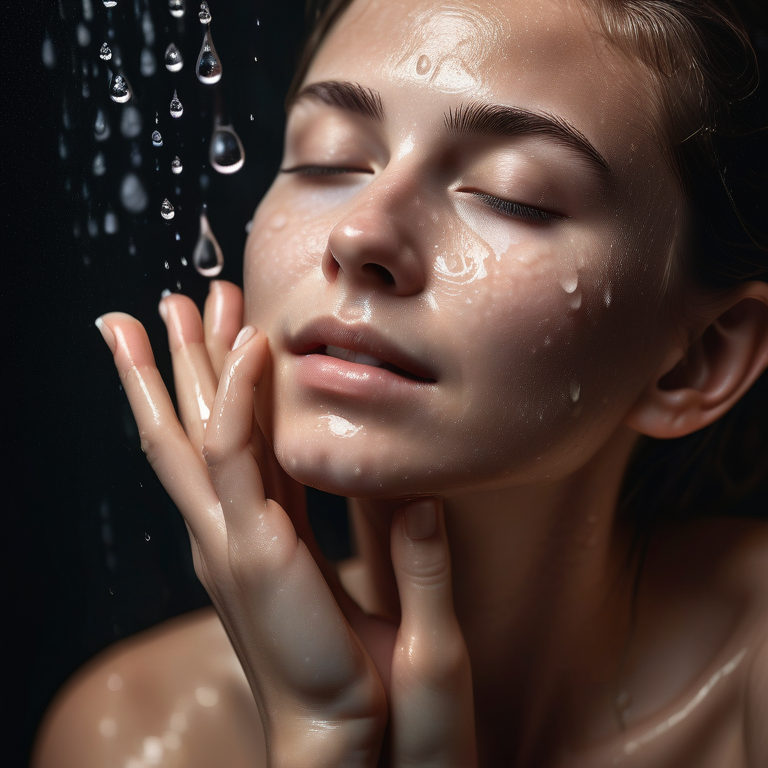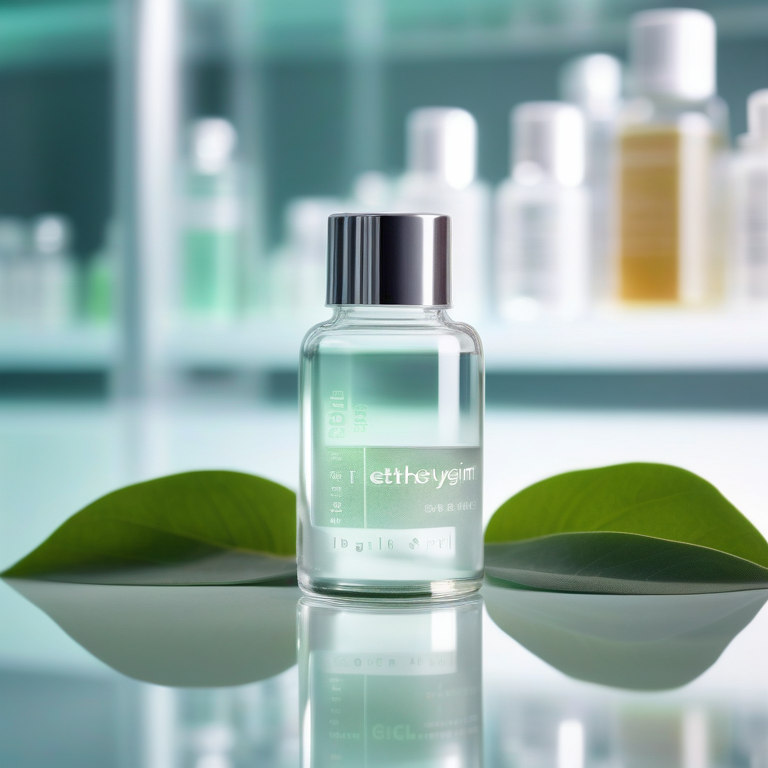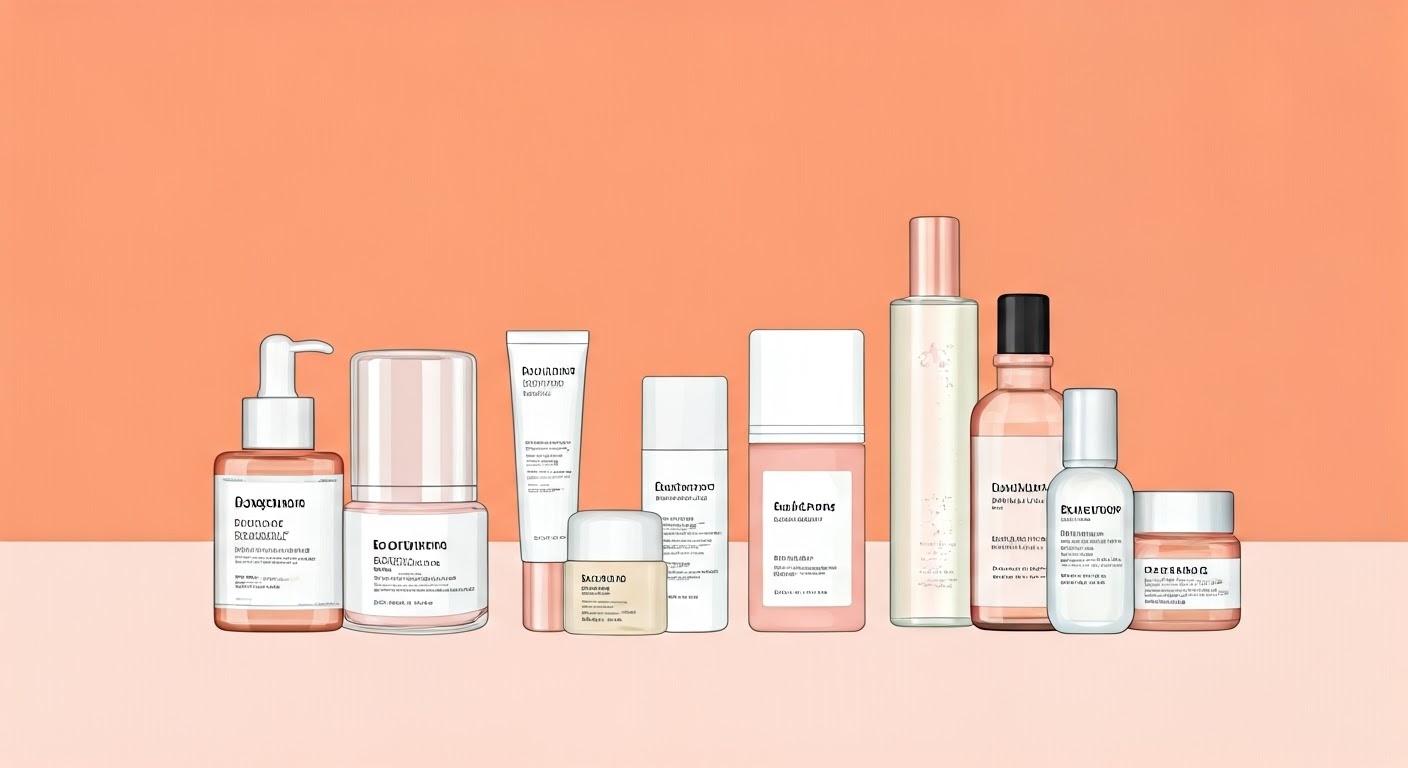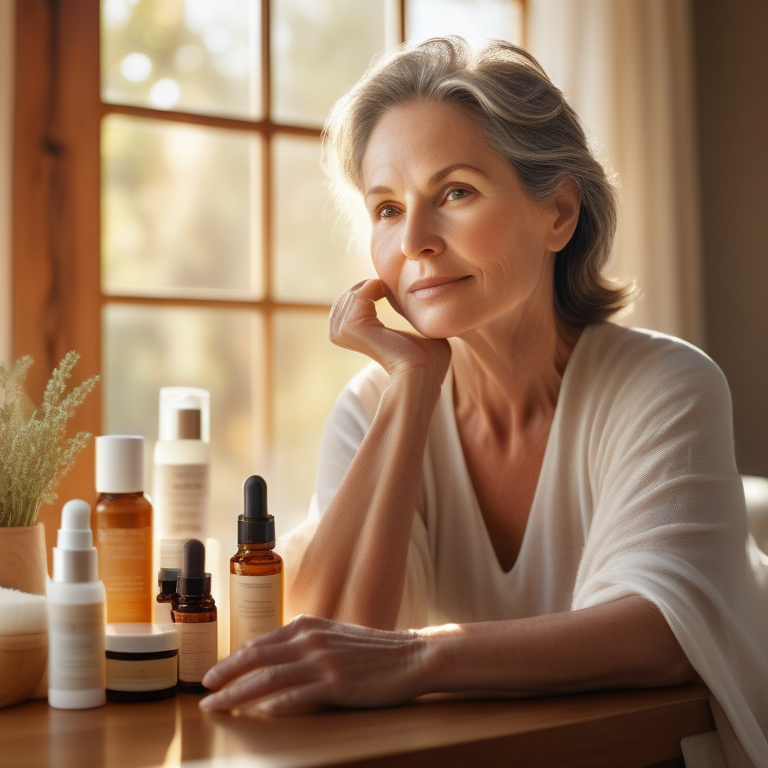Best Way to Cleanse Face for Fresh, Radiant Skin


Key Highlights
Knowing your specific skin type is crucial for selecting the right cleanser and building an effective skincare routine.
- Use lukewarm water and gentle, circular motions while washing for about 20-30 seconds; avoid harsh scrubbing.
- Moisturize immediately after cleansing to lock in hydration and support your skin barrier.
- Consider double cleansing, particularly if you wear makeup, using an oil-based cleanser followed by a water-based cleanser.
- Exfoliate 1-3 times per week to remove dead skin cells, but choose a method appropriate for your skin type.
Introduction
A healthy and glowing complexion begins with a good skin care routine. The first step in this routine is a proper cleansing routine. Cleansing is very important in any skincare regimen. It helps take away dirt, extra oil, makeup, and other unwanted substances. By cleansing, you get your skin ready to soak in the other skincare products well.
Understanding Your Skin Type
Before starting your skincare journey, it is important to know your skin type. This step helps you pick the right products and treatments for your skin’s needs. When you understand your skin type, you can create a skincare routine that effectively tackles specific concerns.
For example, a person with oily skin may benefit from a foaming cleanser that reduces excess oil. In contrast, someone with dry skin might prefer a creamy, hydrating cleanser.
The Importance of Knowing Your Skin Type
Your skin type is mostly from genes. It affects how skin reacts to things inside and outside your body. Oily skin can mean too much oil, leading to clogged pores and breakouts. Dry skin lacks moisture, causing tightness, flakiness, or dullness.
Sensitive skin needs extra care as it reacts strongly to some ingredients or environmental changes, causing irritation, redness, or inflammation. The first skincare step is knowing your skin type. Understanding your skin helps choose suitable products for its specific needs, keeping it healthy and balanced.
Identifying Different Skin Types
Understanding the characteristics of various skin types can guide you towards determining your own. Here's a simple breakdown:
Oily skin is characterized by enlarged pores, a shiny appearance, and a tendency for breakouts due to excessive production of natural oils. Dry skin, in contrast, feels tight, can appear flaky, and exhibits fine lines prominently due to a lack of moisture. Sensitive skin, however, is more prone to irritation, redness, or itching upon contact with certain ingredients or environmental aggressors.
|
Skin Type |
Characteristics |
|
Oily Skin |
Shiny appearance, enlarged pores, prone to breakouts. |
|
Dry Skin |
Tight feeling, flaky patches, visible fine lines. |
|
Sensitive Skin |
Easily irritated, red, or itchy. |
Essential Face Cleansing Tips
A good face cleansing routine is more than just washing your face with water. It requires a careful mix of gentle washing, choosing the right products, and knowing what your skin needs. Use these face cleansing tips to help you clean your face well without removing your skin's natural moisture.
Keep in mind that a regular and proper face cleansing routine is important for healthy and glowing skin.
The Right Way to Wash Your Face
Start by washing your hands well. This helps prevent transferring bacteria to your face. Next, wet your face with lukewarm water. Avoid using hot water, as it can take away your natural oils. Take a small amount of face wash and put it on your fingertips.
Gently massage the cleanser onto your face in circular motions. Pay extra attention to areas that get oily or clogged. Be careful with the delicate skin around your eyes. Use gentle pressure there. Don’t rub or scrub too hard; it can irritate your skin and might cause early aging.
Rinse off the cleanser well with lukewarm water, making sure there's no leftover residue. Finally, use a soft towel to gently pat your face dry, instead of rubbing, as that can damage your skin.
Selecting the Perfect Cleanser for Your Skin
Choosing the right cleanser is important for your skin type. A gentle cleanser works well for all skin types. It removes dirt without harming the skin barrier. If you have oily skin, look for foaming or gel cleansers. They help control oil and can stop breakouts.
For dry skin, creamy or hydrating cleansers are best. They add moisture and comfort to dry areas. If you have sensitive skin, choose a cleanser that is fragrance-free and hypoallergenic. This will reduce the chance of irritation.
The Role of Water Temperature in Face Cleansing
While it may be tempting to wash your face with hot water in the colder months, it’s not the best choice for healthy skin. Hot water can take away your skin's natural oils. This leaves it feeling dry and tight. Cold water can also be tough on the skin. It can make blood vessels shrink and cause irritation.
Lukewarm water is the best option for cleansing your face. It helps to loosen dirt and oil without disturbing your skin's moisture. It also opens up pores gently. This allows cleansers to work better and remove impurities.
Using lukewarm water provides a good way to cleanse your skin while keeping it healthy.
The Double Cleansing Method

The double cleansing method is very popular in skincare, and it's easy to see why. It has two steps that get rid of makeup, dirt, and other stuff on your skin. This leaves your skin really clean. This method is great for people who wear makeup often. It makes sure all traces of makeup are gone, helping to stop clogged pores and breakouts.
By removing impurities well, double cleansing helps your skin take in other skincare products better. This can make those products work even better.
What is Double Cleansing?
Double cleansing begins by using a cleansing oil, balm, or micellar water. This helps to break down makeup, sunscreen, and excess oil on your skin. This first step removes oil-based impurities without taking away your skin's moisture. After this, you use a water-based cleanser that suits your skin type. This will wash away any leftover dirt, sweat, and grime. Your skin will then be ready for the next steps in your skincare routine.
You don't always need two different cleansers for double cleansing. If your first cleanser is gentle and works well to remove makeup, you can use it twice. The key part of double cleansing is the two steps: first, use an oil-based product, then follow with a water-based one.
If you use heavy makeup or sunscreen regularly, using different products for each step can give you a deeper clean.
How to Effectively Double Cleanse
To start double cleansing, use it on dry skin. Put a good amount of the oil-based cleanser or balm on your face. Lightly massage it in circles, focusing on areas with makeup. Rinse well with lukewarm water. Next, apply a water-based cleanser that matches your skin type on damp skin.
Again, gently massage it into your face with circular motions and rinse it off with lukewarm water. Then, use a soft towel to pat your face dry.
You should do double cleansing once a day, ideally in your evening skincare routine. This helps remove the day's dirt without drying out your skin, making it good for most skin types.
Exfoliation: How and When to Do It

Exfoliation is an important part of any skincare routine. It helps to get rid of dead skin cells and boosts new cell growth. This helps your skin look smoother and brighter. However, you need to be careful. Doing too much exfoliation can harm your skin barrier and make things worse.
It's important to find the right exfoliation method that fits your skin type. Start by adding it to your routine little by little. Watch how your skin responds and change how often you exfoliate based on what your skin can handle. Remember, gentle exfoliation is the best way to get a glowing look without hurting your skin's health.
The Benefits of Exfoliation
Dead skin cells can make your skin look dull. They can also clog your pores and cause an uneven skin tone. Exfoliation is very important. It removes these dead skin cells and shows the fresh, healthy skin beneath. If you exfoliate regularly, your skin can look brighter and more radiant.
Exfoliation helps clear out pores too. This can reduce breakouts and help skincare products work better by soaking in deeper. By adding exfoliation to your skincare regimen, you support new skin cell growth. This can help create a more youthful look.
However, too much exfoliation can irritate your skin and harm the skin barrier. It's important to find the right frequency that fits your skin type. This way, you can enjoy the benefits of exfoliation without any negative effects.
Choosing the Right Exfoliation Method for Your Skin Type
There are two main types of exfoliation: chemical and physical.
- Chemical exfoliants use acids like salicylic acid and glycolic acid. These acids break down the bonds that hold dead skin cells together. This process helps to speed up the growth of new skin cells and makes your skin smoother. Salicylic acid is great for oily or acne-prone skin because it can go deep into the pores and clear out blockages. Glycolic acid is good for fixing uneven skin tone, dark spots, and fine lines.
- Physical exfoliants include scrubs and cleansing brushes. They remove dead skin cells by rubbing against the skin. While they work well, physical exfoliants can be rough if not used properly, leading to tiny tears in the skin.
It's important to pick a physical exfoliant with soft, rounded particles. Avoid scrubbing too hard. A dermatologist can help you find the best exfoliation method for your skin type and address any specific concerns.
Moisturizing After Cleansing
After cleansing, your skin is ready to take in moisture. This is the best time to put on a moisturizer. Moisturizing helps fix the skin's natural moisture barrier. This barrier is important because it protects your skin from outside damage and stops moisture loss.
When picking a moisturizer, think about your skin type and any problems you want to address. For oily skin, use lightweight and oil-free moisturizers. For dry skin, choose richer and creamier options. Look for ingredients like hyaluronic acid, which helps hold in moisture, and ceramides, which keep the skin barrier strong. Adding a moisturizer to your skincare routine after cleansing keeps your skin hydrated and healthy.
Why is Moisturizing Crucial?

The skin barrier is the top layer of our skin. It keeps moisture in and protects us from things like pollution, bacteria, and UV rays. Cleansing our skin is important to remove dirt and impurities. However, it can sometimes harm the skin barrier. This may cause moisture loss and irritation.
Moisturizers are very important, too. They help put back water into the skin and keep the skin barrier strong. This helps stop dryness, flakiness, and sensitivity. When the skin is properly hydrated, it looks healthy, smooth, and youthful.
Moreover, moisturizers create a thin layer on the skin. This layer helps stop more moisture from escaping and acts as an extra shield against damage from the environment.
Recommendations for Moisturizers
Choosing the right moisturizer can really improve your skincare routine. Look for products that match your skin type. If you have oily skin, find oil-free moisturizers that are non-comedogenic, so they do not block your pores. If your skin is dry, consider using thick, creamy moisturizers that give your skin a lot of hydration.
For people with sensitive skin, it’s best to choose products that are fragrance-free and hypoallergenic to reduce irritation. Good ingredients to look for in any moisturizer include hyaluronic acid, ceramides, and niacinamide.
Hyaluronic acid helps to bring in and hold moisture. Ceramides work to strengthen the protective skin barrier. Niacinamide can calm inflammation, lessen redness, and make pores look smaller. Applying your moisturizer right after cleansing locks in moisture, boosting hydration and helping your skin’s natural barrier work well.
Common Mistakes to Avoid in Face Cleansing
Cleansing is an important step in our skincare routine, but many of us make simple mistakes that can hurt our skin. These mistakes can include using harsh products or ignoring some areas of our face. By recognizing these common issues, we can change our cleansing habits to better care for our skin.
A gentle and good cleansing regimen is key to achieving clear and radiant skin.
Over-Cleansing and Its Effects
Cleansing is important, but too much cleansing can harm your skin. Washing your face too often or using strong cleansers can remove natural oils. This damages the skin barrier and can lead to irritation. The skin barrier helps keep you hydrated, protects against harmful outside elements, and stops moisture loss.
When the skin barrier is damaged, it can cause dryness, flakiness, inflammation, and even breakouts. You might notice signs of over-cleansing like a tight, dry, or itchy feeling after you wash. You may also see redness and increased sensitivity.
If you feel these symptoms, you should wash your face less often and choose a gentler cleanser that is good for your skin type. It's important to restore your skin barrier's balance to keep it healthy and glowing.
Using the Wrong Products for Your Skin Type

Using the wrong skincare products for your skin type can ruin your chances of having healthy, clear skin. What works well for one person might cause breakouts or worsen skin issues for another. It is important to know your skin type—oily, dry, sensitive, or a mix—and pick products that fit those needs.
For instance, if you use a heavy cream meant for dry skin on oily skin, it could clog pores and lead to acne breakouts. In the same way, putting a harsh toner for oily skin on dry skin may worsen dryness and cause irritation.
Choosing the right products can make a big difference in getting a healthy and glowing complexion. You can research ingredients, read product labels, and ask an esthetician and/or a dermatologist for help. This will help you make smart choices that suit your skin's special needs.
Conclusion
In conclusion, knowing your skin type and sticking to the right cleansing routine is important for fresh and clear skin. When you choose the right products and methods for your skin's needs, you can keep a healthy look. Remember to moisturize and exfoliate regularly. Avoid common mistakes like cleansing too much or using the wrong products. Taking care of your skin will help you get that glowing look you want. So, add these cleansing tips to your skincare regimen for beautiful and healthy skin.
Frequently Asked Questions
How often should I wash my face?
Dermatologists suggest that you wash your face two times a day. This should be done in the morning and at night as part of a good skincare routine. If your skin is very dry, you can just splash some water on your face in the morning. Save the face washing with a cleanser for the evening.
Can I just use water to cleanse my face?
Splashing your face with water can feel nice, but it does not clean the skin well. Water alone can't fully wash away makeup, sunscreen, extra oil, and other dirt. This might also remove the skin's natural oils and harm the skin barrier.
What is the best time to cleanse your face?
The best times to wash your face are in the morning and at night. In the morning, washing helps remove sweat and oil from while you slept. At night, washing is important to take off makeup, sunscreen, dirt, and other impurities from the day. This helps your skin breathe and heal while you sleep.




